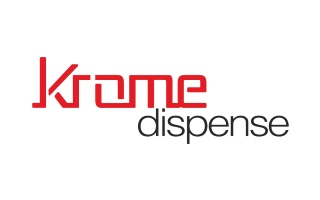Perfect Draft Beer Pouring
Pouring a perfect glass of Beer can be quite a challenge. But it is important to master Perfect beer Pour since it affects the look, feel and taste of the serving.
Luckily for us, a lot of experimentation has already been done and the results shared. We just have to make sure to follow them and enjoy the fruits, er… beer!
In this article, we have pieced together the best practices across the industry as a checklist and why each step matters. Let’s get started!
A perfect beer pour – is clear, crisp and flavourful.
It is also served with a sizable foam head of 1/2 to 1 inch according to the beer style. The beer head is gas bubbles rising to the surface – an indication of a well carbonated beer.
Effect of physical quantities – Pressure and temperature
Both pressure and temperature have an effect on the amount of CO2 that will remain dissolved in the beer.
Cooler beer can keep more gas molecules mixed with it while warmer beer tends to release them faster which causes foaming.
Gas pressure is the push that moves the beer from keg to the tap. Too much – rushes the beer causing foaming while too little gives the gas room to escape. And the latter gives, what we call, a flat beer.
Most lagers and ales in the US are dispensed at 10-13 PSI. The temperature is kept about 38-42° Fahrenheit (which is about 3-6° Celsius) for lighter beers and slightly higher for heavier ones.
Don’t overchill the beer as it would numb the taste buds and not give a full flavoured experience.
Other components that affect beer dispensing
Keg
Open and use kegs only after they have stabilized. Transportation and other movements cause beer agitation. It is best to rest the keg for an hour or two before dispensing from it.
Always keep beer out of heat and direct sunlight. They affect beer characteristics. If you are dispensing beer from a cooled keg placed outside the cooling unit over a long period of time, wrap an ice blanket to help keep the temperature from rising.
Beer lines
Beer lines form the circulatory system of draft beer dispensing. They carry beer over long distances, more so in commercial establishments. From keg to the faucet, the draft beer shares a long journey inside the beer lines.
Made from malted grain, beer also has soluble fibre, vitamins and minerals apart from its main ingredients – water and alcohol. Unfiltered beer, like in case of homebrewing, can also have some dead yeast. All this contributes to beer stone deposits and mould formation in beer lines over time.
This gives an off taste and smell to the beer as well as creates an uneven surface that agitates beer. This often leads to foaming again.
And the only solution to this is, cleaning beer lines and the entire system regularly. Beer industry recommends cleaning the dispensing system at least once a fortnight.
The best way to thoroughly clean is by pumping cleaner (mixed with water in the ratio prescribed on the pack/bottle) through the system. This should be followed by sanitizing. Dismantle and soak the beer lines in sanitizing solution and flush them with water to get rid of the chemicals.
Glass
The beer glass should be clean, free of any residue and sanitized.
Just before pouring, rinse with slightly cold water to bring to close to the temperature of the beer. However, do not freeze the Glassware since ice formation makes the surface uneven and, as you may guess by now, agitates beer giving a lot of foam.
To pour, start with the glass at a 45 degree angle. Do not touch the faucet opening with the glass edge. Instead, keep about 1 inch distance to the pouring point. As the glass fills up, slowly bring the glass upright and finally vertically up – all the while, keeping the faucet just above the beer level.
There you have it! The master secret to perfect beer pouring from keg to glass.
